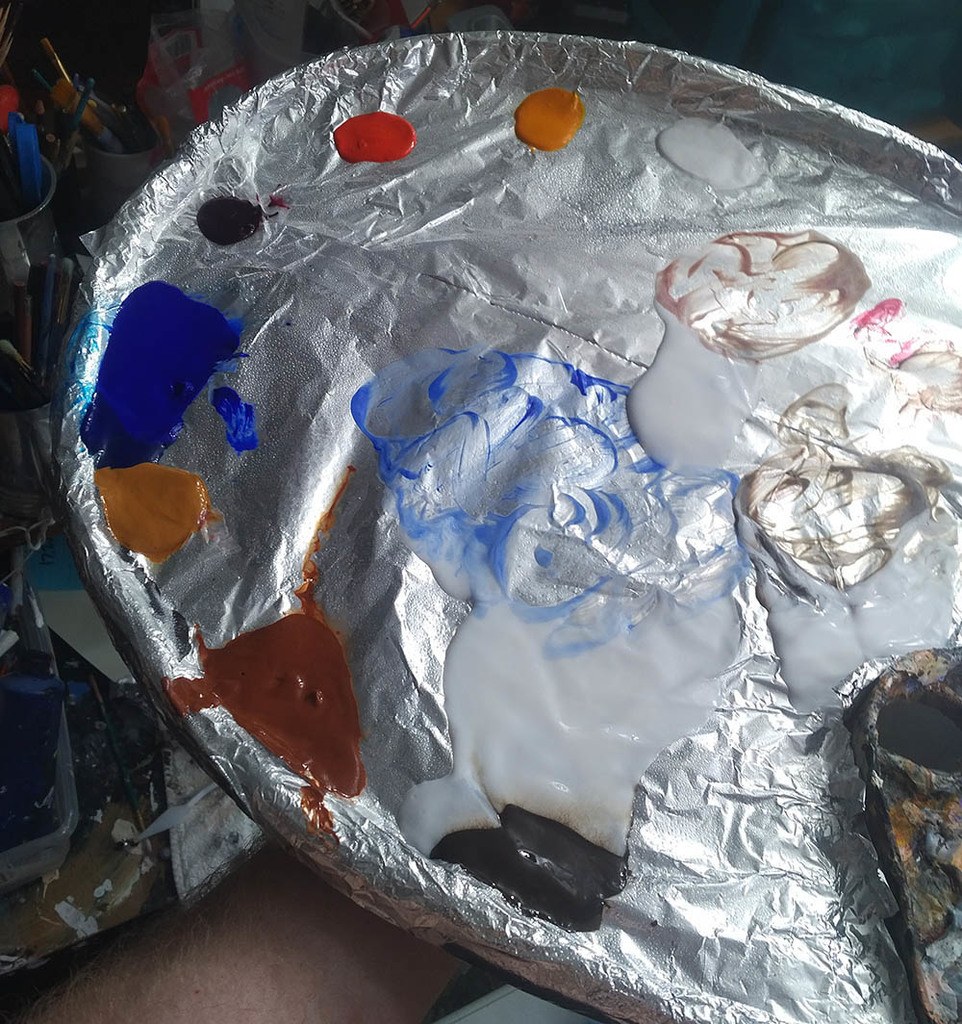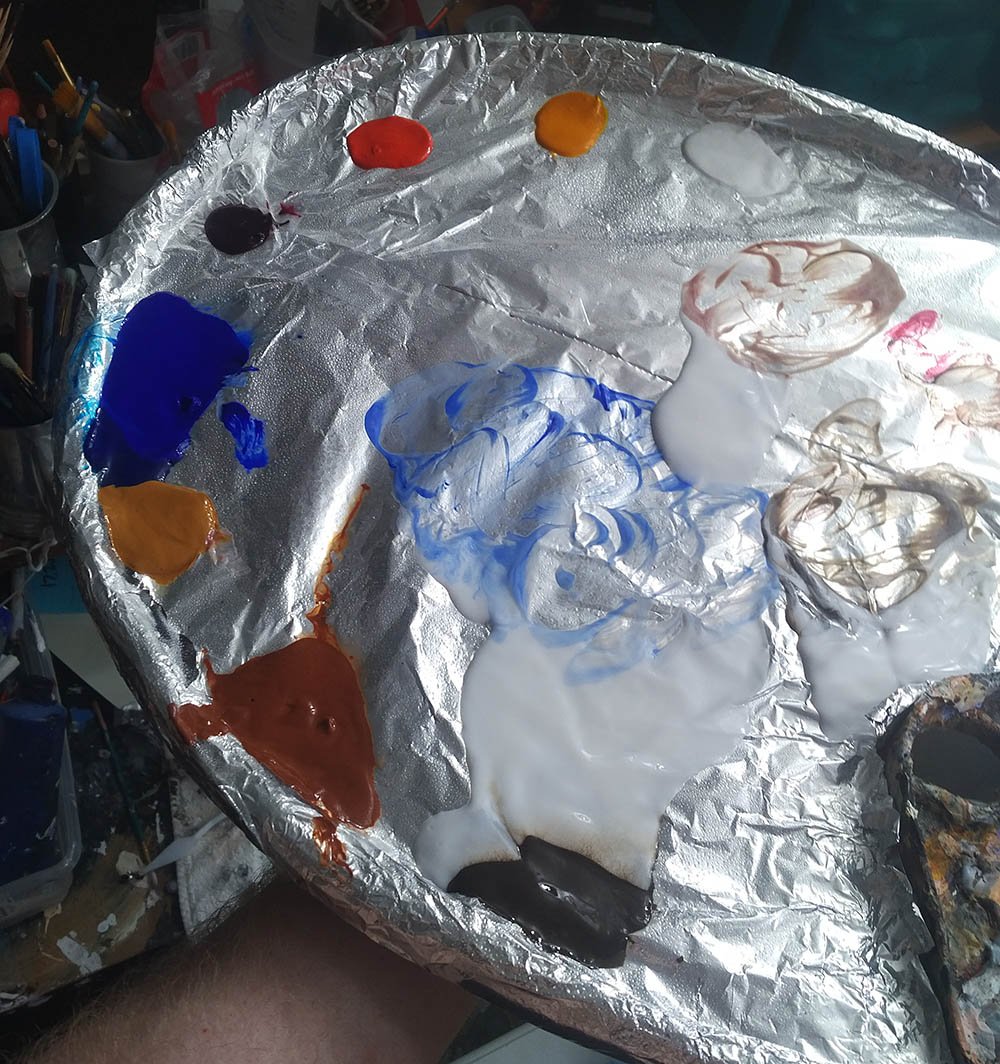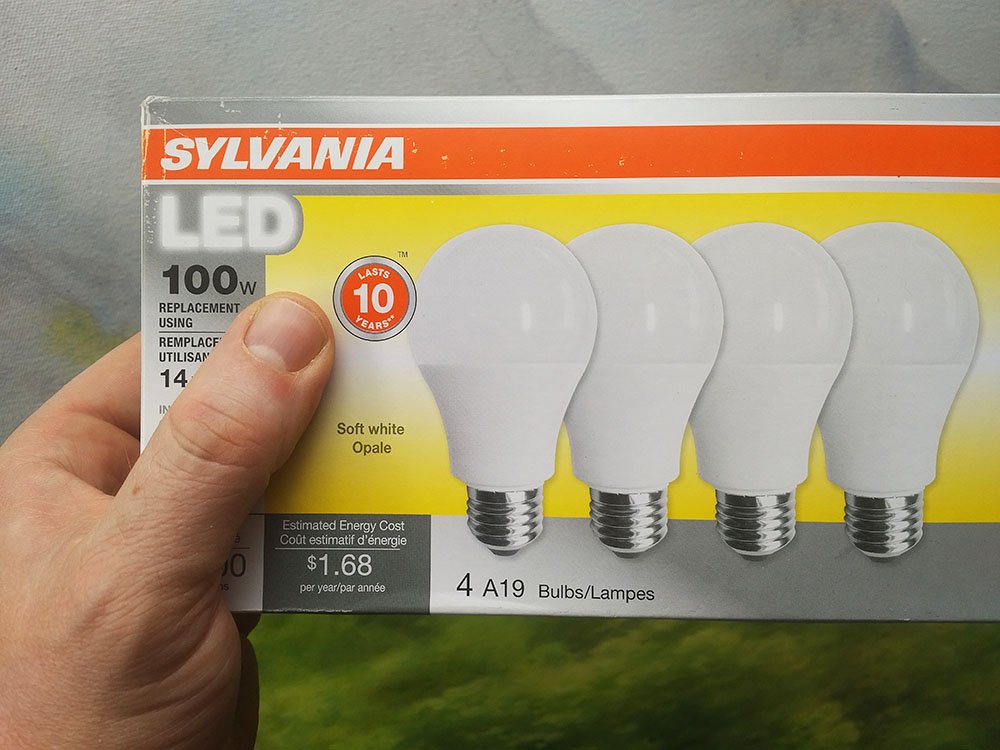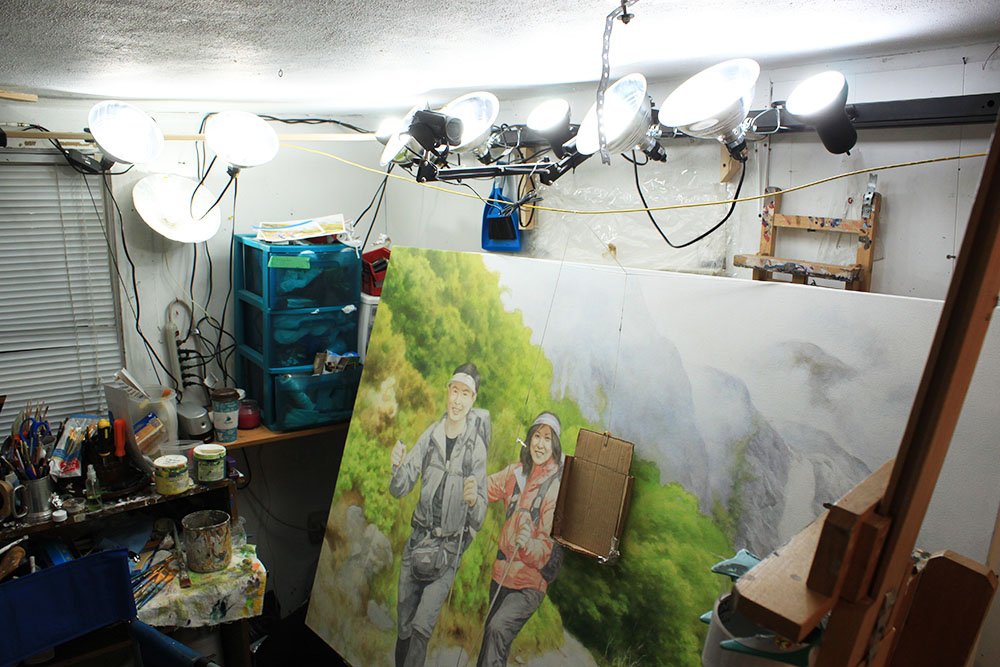Archive Monthly Archives: October 2018

Easy, Inexpensive Artist’s Palette for Acrylic Painting
One of the most important aspects of acrylic portrait painting is setting up your palette.
It’s often overlooked, but having a palette setup that works well for you can minimize frustration, increase productivity, reduce paint costs, and even enhance accuracy in your portrait.
Recently, an artist asked me how I set up my palette. Of course, there’s many ways to do it.
I’m not going to say the way I do it is the right way, but it works for me. And it may work for you as well.

I use a traditional wood palette–about 14″ wide and 18″ long. I customized it a bit by adding a lip to the edge. That keeps my matte medium from dripping off the side. The lip is thick chipboard about 2″ in width that I bent and glued onto the wood. Then I sealed it with gloss medium to keep the moisture from warping it.
Let me help you get started on your new portrait today…
Learn How to Paint Acrylic Portraits With My Free Mini-Video Course!Before I start a new painting, I put aluminum foil over the entire surface, and attach it securely to back of the palette with clear packaging tape. It holds very well.
Then I lay out my paints.
I keep them wet as I can with a spray bottle of water while I work, spraying them about every 15 minutes or so.
When my mixing area gets too full of paint, I add a fresh piece of aluminum foil over the area, folding it over slightly to conform to the rounded shape of the palette. The previous layer of wet paint holds it down. This way I am not wasting paint. All my main colors on the palette remain until my painting is done or they dry up.
I throw the discarded, soiled pieces of aluminum foil away in a bag and then I get paid for them when I recycle them with my aluminum cans. And it doesn’t pollute the environment either!
Here is a video where I explain further how to set this palette up…
Question: What do you use for your palette…and why?
Enjoy your portrait painting and let me know if I can help you in any way.
All the best,

P.S. Did you find this post helpful or encouraging? If so, send it on ahead! Let others know with the share buttons below. I’d love to hear your comments. Thank you so much! Also, do you have a question on acrylic portrait painting you’d like answered? Let me know, and I’d be happy to help!

How To Illuminate Your Art Studio?
Transform your studio with the essential lighting tips for every artist
For acrylic portrait painters and all artists, there is a truth we can’t hide from: we can only paint as well as we can see
So, how well are we seeing in our art studios?
Here’s a question I got from one of my art students:
“I would like to paint in the evening but find out the next day my skin tones are off. I have the room overhead a one lamp with the daylight bulb but doesn’t seem to be enough. I do have cataracts which may be part of the problem but can’t have that fixed until next year. You said you currently have no windows in your studio so what do you use for good lighting? I’m sorry to bother you with a question like this but I was quite upset this morning to see what I did last night!”
Thanks so much and God Bless.
Sharon
Here’s my answer:
Hi Sharon,
It’s annoying to not have enough light. I remember when I first started painting, I would work with those old yellowish incandescent bulbs. When I took my painting outside to photograph it I said, “That’s NOT how it looked in my studio!” The colors were off, and it looked grainy.
Now with LED bulbs being so inexpensive (to buy and to run) I have 10 lights in my studio with 100 watt-equivalent daylight spectrum bulbs. Best part is they only use 14 watts a piece, so it’s pretty energy efficient!

They are simple clamp-style lamps with metal reflectors that you can buy at your home improvement store for about $5-10 a piece. You don’t even have to buy them all at once. You can do it like I did. Every time I ran to Menards, I would buy another lamp. I spaced it out over the course of a couple years!

Here is a shot of my messy, well-used studio with the lights aimed at the ceiling. The reflected light works great to illuminate even a large painting. While I’m working there are virtually no shadows from my hands and arms to interfere with my painting.

I do have a window in my studio now, but it doesn’t do a lot. It’s mostly the light bubs that illuminate everything for me.
Question: How do you illuminate YOUR studio?
LEARN MORE
- How to Paint Foliage Using the Acrylic Glazing Technique
- How to Trace for an Accurate Portrait Sketch
- How to Paint Realistic Eyes in Your Acrylic Portrait
- How to Add Raw Umber Dark & Ultramarine Blue to Your Portrait
- How to Make Your Own Raw Umber Dark
- How to Paint Realistic Trees & Grass in Your Acrylic
- How to Block In Skin Tone Values Using Glazing Technique
- How to Paint Vibrant Reds in Your Acrylic Portrait
- How to Glaze Background Colors & More Acrylic Portrait
- How to Paint White Clothing in Your Acrylic Portrait
- How to Easily Transition from a Sketch to a Painting
- How to Block In Shading & Skin Tones in Your Acrylic
- How to Build Up Color on Acrylic Pet Portrait
- How to Build Up Form on Clothing with Acrylic
- How to Paint Dark Clothing Using Acrylic Glazing Technique
- How to Paint a 24 x 30 Acrylic With 30 People
- How to Do Smooth Shading with Acrylic
- How to Sketch an Acrylic Portrait with a Grid
Read more about how to paint a portrait that you can surely be proud of!
All the best,

P.S. Did you find this post helpful or encouraging? If so, send it on ahead! Let others know with the share buttons below. I’d love to hear your comments. Thank you so much! Also, do you have a question on acrylic portrait painting you’d like answered? Let me know, and I’d be happy to help!
